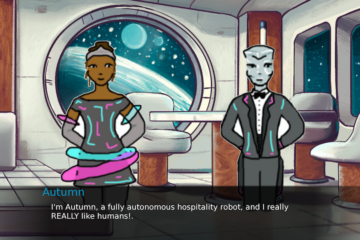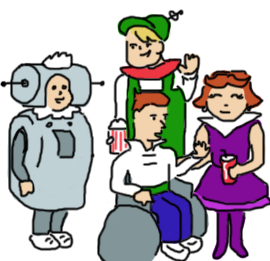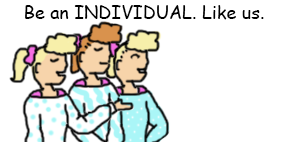Blog post idea suggested by Steven Doyle
She shrugged, modestly, and we marveled at a list of random things. “An old man with a toothache, daughter and son argue about lemons, sisters lost in a department store.”
It was a warm day toward the end of the semester. The classroom was in the church-like Clarke hall, built in Victorian times with heavy wood trim and no air conditioning. The glow of the wood made everything sleepier and the green shade outside painfully inviting. Professor Mary Grimm sat on the table at the front of the class, kicking one foot. “College sometimes isn’t helpful to writers. You find it hard to write, when you have academic work to do. One day I just,” she adjusted the sheet of paper on the overhead projector, “started writing down ideas. So, even if I’m not writing, I can say, well, look, here are thirty-one ideas.”

Maybe it didn’t happen quite like that, but I do know that Mary Grimm gave me the idea, and I immediately started an “Ideas File” on my computer. A file I lost several times, but always re-created.
Here’s the top of my current Ideas File:
Blood Oaths – in a non-magic world.
Family self-destruction.
Orcs unionize, and then radicalize the elves.
“I just want AI to make decisions for me.”
“AI apologize to my girlfriend.”
Mary was right… it’s easy to come up with ideas. I have four or five a month. The file is huge.
So, uh… where are the stories from those ideas?
When I asked on Facebook if anyone had blog post ideas for me, my friend Steven Doyle responded, “That situation where you’ve got a good idea for a story, with the premise, themes, etc., but don’t know what POV to use or where to start? (Possibly describes where I am right now.)”
Most of the ideas in the idea file just… are. They sit. They do nothing. Sometimes I print out a page and cut it into strips and put it into a teapot for my friends to draw from. It’s fun, but I haven’t seen a lot of finished products from it. That’s because…
Ideas are not stories.

The frustrating thing is, no matter how cool a premise sounds in a sentence, you have to come up with all the rest of the stuff – the setting, the point of view, the scenes. This is why that friend of yours who comes up to you and says, “I have a great idea for story! Just share the fame and wealth when you’re done!” never wrote it his damn self.
Writing is work? But okay, you knew that or you wouldn’t be asking me how to go from idea to story. Here are some of the strategies I use. Remember, stories don’t have to start in a brand-new completely different way from every other story out there.
Write Your Way In
Possibly the most common solution and one I see a lot in student work. You just start writing, knowing that what you write is going to get cut.
Well, the students don’t know that. They’re just writing because it’s WRITING and outputting words was enough to impress people when they were twelve. (I know because I remember me at twelve.) Still, there’s something to be said for free-writing, and even now, I sometimes have to just SIT DOWN AND WRITE, set a timer, let the mind wander. It always seems to be about three pages later that you actually hit a story.
So, write three random pages, or…
A Person in a Place With a Problem
When I learned NOT to “write my way in” I started with A Person in a Place with a Problem.
I’ll brainstorm some people, places, and problems, like this:
| Lady Gaga | Space Station | No working restroom |
| A cute robot | shopping mall | no wifi |
| Cranky old man | amusement park | too short to ride |
| were-beaver | southern Ohio | robot mariachi attack |
Chances are, if you start with a character, in a place, with a problem, it’ll engage your audience and give you time to introduce What The Story Is Actually About.
So, uh… what is the story actually about?
Rub an Idea Against an Idea
Sometimes I have an idea, and I want to write it, and I don’t know how to go from idea to story, so I go to my ideas file and look for other ideas to add to it.
So, say the idea I want to write is “Blood oaths in a non-magical world” – I might add to it “family self-destruction” because those are obviously compatible. Oh! And “AI apologize to my girlfriend” could fit into that, too. So I know I need a family that’s falling apart. I look through my “Ideas for characters” and the one that’s really grabbing me right now is the cute robot, so okay, I’ll start with the cute robot, let’s say the robot is a family servant for some rich family that’s dealing with the fallout of a blood oath. Obviously, someone betrayed someone. Better if it’s siblings or a parent-child betrayal. Closer is nastier, right? And our cute robot witnesses it all. Oo what if I do the whole thing in the point of view of robot logs?
Skip Minor Decisions
The main work of plotting is making decisions. Hell, that’s the main work of writing. This word or that? First person or third? How about second?
We’ve all heard of the “life hacks” of limiting your decisions, because decisions are exhausting. President Obama wore the same type of suit every day so he didn’t have to decide what to wear. You’re picking the main plot of your story; that’s a BIG decision. So maybe skip the smaller ones, like “What is this character’s name?”
I put placeholders in brackets. “[name] shakes [his/her] fist.” Then, when I’m in a mood for an “easy win” at writing later, I search for “[” and start playing a private game of Mad Libs.
There, that’s how I do it.
I know, that wasn’t very satisfactory. No matter what, you have to actually write the thing. But the idea is to find a situation, to find the action, to decide.
Decide, then write what you decide.
Vaya con suerte.


